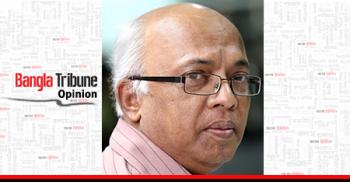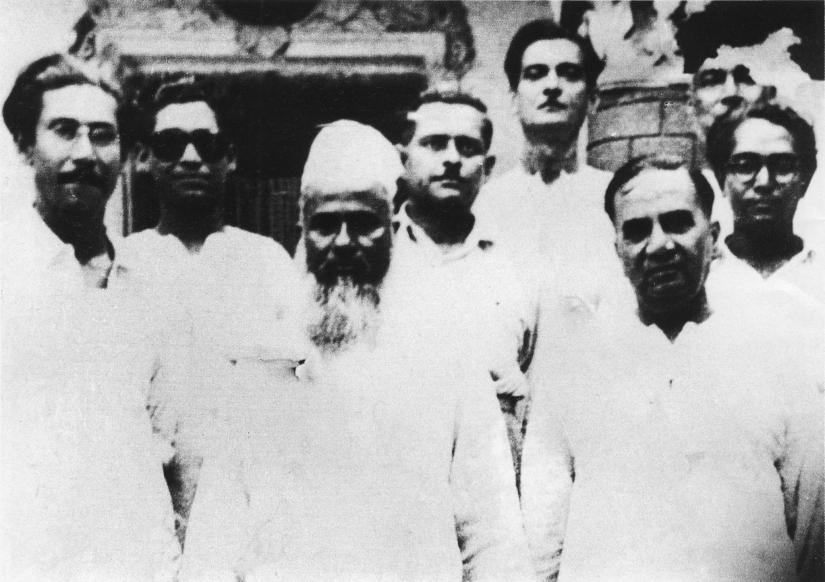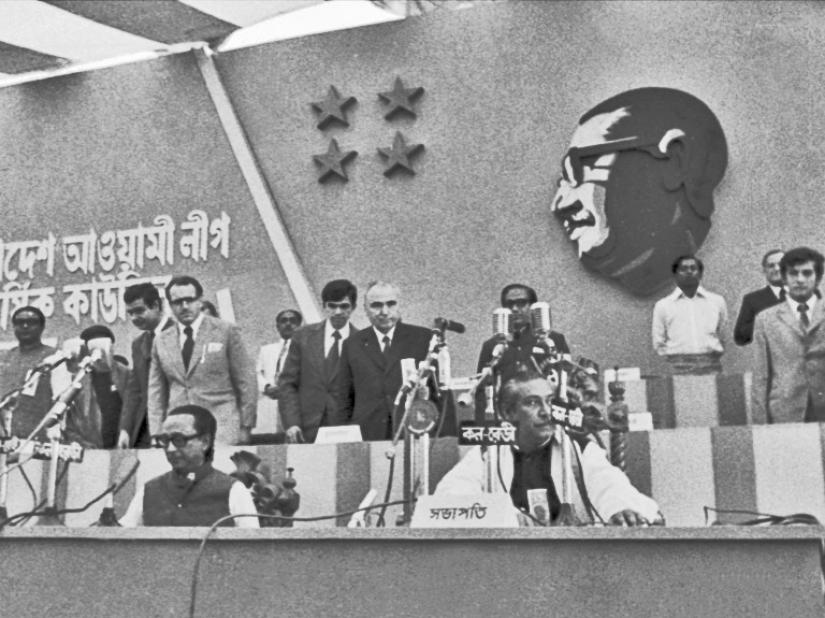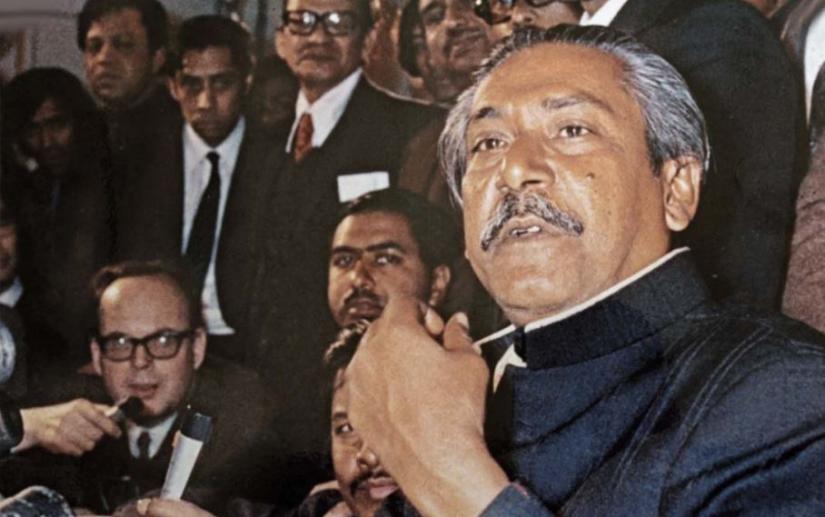 On the 70th anniversary of the emergence of the Awami League, a simple truth must be averred at the beginning.
On the 70th anniversary of the emergence of the Awami League, a simple truth must be averred at the beginning.
The party, originally known as the Awami Muslim League before its reinvention as a secular Awami League in the mid-1950s, has been synonymous with Bengali aspirations all the way from the days of Pakistan till the present. In all these long decades, the party has suffered grievously at the hands of dictators of both the Pakistani and Bengali brands; has scaled the heights in unprecedented ways; has made mistakes and has paid the price; and has in the overall sense remained the prime vehicle of Bengali dreams for a happy future.
Many have been the stalwarts who have steered the Awami League through its happy times and dark moments. Their leadership, especially through the 1960s and 1970s, transformed the party into a powerful voice of freedom. Today, under the present generation of its leaders, it continues to be the embodiment of national aspirations. And yet the Awami League, because it has suffered through the years, knows it must remain alert to all the intrigues which might yet shape up against it in future. When the Awami League falls, as history has all too often shown, it is an entire Bengali nation which falls with it.
 There are, even as we speak of the place of the Awami League in Bangladesh’s history, the tales of those who were once with it and then made their way out of it for reasons of a varied nature. Some left over differences in policy matters; some others were unable to accept with equanimity the rise of radical young leadership in the party, and there were some others whose exit from the Awami League had to do more with crass opportunism than principles.
There are, even as we speak of the place of the Awami League in Bangladesh’s history, the tales of those who were once with it and then made their way out of it for reasons of a varied nature. Some left over differences in policy matters; some others were unable to accept with equanimity the rise of radical young leadership in the party, and there were some others whose exit from the Awami League had to do more with crass opportunism than principles.
Maulana Abdul Hamid Khan Bhashani, the first president of the party, was unable to accept the pro-western foreign policy propounded for Pakistan by Prime Minister Huseyn Shaheed Suhrawardy, a leading founder figure of the Awami League, in the 1950s. He made his exit from the party at the Kagmari conference in 1957, at which point he gave shape to the National Awami Party.
 Ataur Rahman Khan, a significant figure in the Awami League who served as chief minister of East Pakistan, opted to leave the Awami League in the mid-1960s when Bangabandhu Sheikh Mujibur Rahman introduced the Six Points as the policy plank of the party. He formed the Jatiyo League in 1969. In the Ershad regime, he served as prime minister for nine months before walking off into the sunset.
Ataur Rahman Khan, a significant figure in the Awami League who served as chief minister of East Pakistan, opted to leave the Awami League in the mid-1960s when Bangabandhu Sheikh Mujibur Rahman introduced the Six Points as the policy plank of the party. He formed the Jatiyo League in 1969. In the Ershad regime, he served as prime minister for nine months before walking off into the sunset.
In undivided Pakistan, Nawabzada NasrUllah Khan served as president of the All-Pakistan Awami League. But differences cropped up between him and Sheikh Mujibur Rahman over the Six Points, eventually leading to a permanent rupture between the two men. The Awami League then effectively passed under the leadership of Bangabandhu and came to be based essentially in East Pakistan.
One of the more articulate of leaders in the Awami League was Zahiruddin, who accompanied Bangabandhu on his whirlwind election campaign tour of West Pakistan in 1970. Fluent in English, Bengali and Urdu, Zahiruddin failed to join the War of Liberation and was sidelined after December 1971. Under the Zia regime, he made somewhat a comeback when he was appointed Bangladesh’s first ambassador to Pakistan (Islamabad had left the Commonwealth in 1972 and hence the formal term of ‘high commissioner’ was not applied to Zahiruddin). In a similar fashion, M. Khurshid, the chief of the Awami League in Punjab prior to Bangladesh’s emergence, was dispatched to Dhaka as Pakistan’s first ambassador to Bangladesh.
General Muhammad Ataul Gani Osmani, elected member of the Pakistan National Assembly on an Awami League ticket in 1970 and re-elected to the Jatiyo Sangsad in 1973, and Barrister Mainul Hosein, elected a member of parliament as an Awami Leaguer in 1973, resigned from parliament in protest at the passage and adoption of the Fourth Amendment to the Constitution in January 1975. Osmani would in 1978 be the opposition candidate for the nation’s presidency against General Ziaur Rahman and lose to him. He subsequently founded the Jatiya Janata Party. Mainul Hosein would join Khondokar Moshtaq Ahmed’s Democratic League. Years down the road, he would serve as an advisor in the caretaker government of Fakhruddin Ahmed.
 One of the more curious of stories about lapsed Awami Leaguers relates to Md Korban Ali, who served as information minister in Bangabandhu’s last government. In the early 1980s, empowered by the Awami League to contact the Ershad regime on the issue of restoration of democracy, he suddenly switched sides and joined the military regime as a minister. The case of Mizanur Rahman Chowdhury, a veteran Awami Leaguer who served as a member of the Pakistan National Assembly in the Ayub Khan era, is equally intriguing. In the immediate post-1975 period, he provided leadership to a faction of a divided and dispirited Awami League.
One of the more curious of stories about lapsed Awami Leaguers relates to Md Korban Ali, who served as information minister in Bangabandhu’s last government. In the early 1980s, empowered by the Awami League to contact the Ershad regime on the issue of restoration of democracy, he suddenly switched sides and joined the military regime as a minister. The case of Mizanur Rahman Chowdhury, a veteran Awami Leaguer who served as a member of the Pakistan National Assembly in the Ayub Khan era, is equally intriguing. In the immediate post-1975 period, he provided leadership to a faction of a divided and dispirited Awami League.
After General Hussain Muhammad Ershad seized power in 1982 and later formed the Jatiya Party, Mizan Chowdhury linked up with it and served as prime minister under the military ruler. Towards the end of his life, he went back to the Awami League. Shah Moazzem Hossain, chief whip of the Awami League parliamentary party in Bangabandhu’s time, linked himself to Khondokar Moshtaq’s Democratic League in the post-1975 era before moving over to Ershad’s Jatiya Party and serving as deputy prime minister in the regime. Later, despite all his earlier publicly voiced obscenities against Begum Khaleda Zia, he presented her with a bouquet and joined the BNP.
Desertions from the Awami League by important personalities surprised many but were never serious enough to weaken the party. KM Obaidur Rahman was one of the earliest among Awami Leaguers to make his way to Zia’s newly formed Bangladesh Nationalist Party and serving as a minister in the military regime. There is the even more bizarre story of Mohammad Mohammadullah, a senior Awami Leaguer who served as deputy speaker and speaker of the Jatiya Sangsad and then as president of Bangladesh in the Bangabandhu era.
After the traumatic events of 1975, he joined Moshtaq’s Democratic League before eventually aligning himself with General Zia in the BNP. He was vice president of Bangladesh for the final twenty-four hours of the government of President Abdus Sattar, who was overthrown by General Ershad in March 1982. In a rather similar mode, Prof Mohammad Yusuf Ali, who read out the Proclamation of Independence at Mujibnagar in April 1971 and later served as minister for education in Bangabandhu’s government, swiftly switched sides, joining the BNP on the watch of General Ziaur Rahman.
 Dr Kamal Hossain — legal advisor to Bangabandhu Sheikh Mujibur Rahman in the Agartala case, member of the Awami League team at the abortive round table conference in Rawalpindi in February-March 1969 and at the failed negotiations with the Yahya Khan regime in Dhaka in March 1971, minister for law in independent Bangladesh and chairman of the parliamentary constitution-drafting committee and later minister for foreign affairs in Bangabandhu’s government and the Awami League nominee for the presidency in November 1981 — played a pivotal role in Sheikh Hasina’s return home from exile in May 1981 and her assumption of the leadership of the Awami League. He later left the Awami League over policy differences and formed the Gano Forum.
Dr Kamal Hossain — legal advisor to Bangabandhu Sheikh Mujibur Rahman in the Agartala case, member of the Awami League team at the abortive round table conference in Rawalpindi in February-March 1969 and at the failed negotiations with the Yahya Khan regime in Dhaka in March 1971, minister for law in independent Bangladesh and chairman of the parliamentary constitution-drafting committee and later minister for foreign affairs in Bangabandhu’s government and the Awami League nominee for the presidency in November 1981 — played a pivotal role in Sheikh Hasina’s return home from exile in May 1981 and her assumption of the leadership of the Awami League. He later left the Awami League over policy differences and formed the Gano Forum.
Seventy years after June 1949, the history of the Awami League, in all its dimensions, requires to be put on the record — for those who have observed it in the best and the worst of its times, for those who strive to understand its place in the idea of Bangladesh, indeed in the ethos of Bangladesh.
Syed Badrul Ahsan is a political commentator and biographer of Bangabandhu Sheikh Mujibur Rahman and Tajuddin Ahmad.


